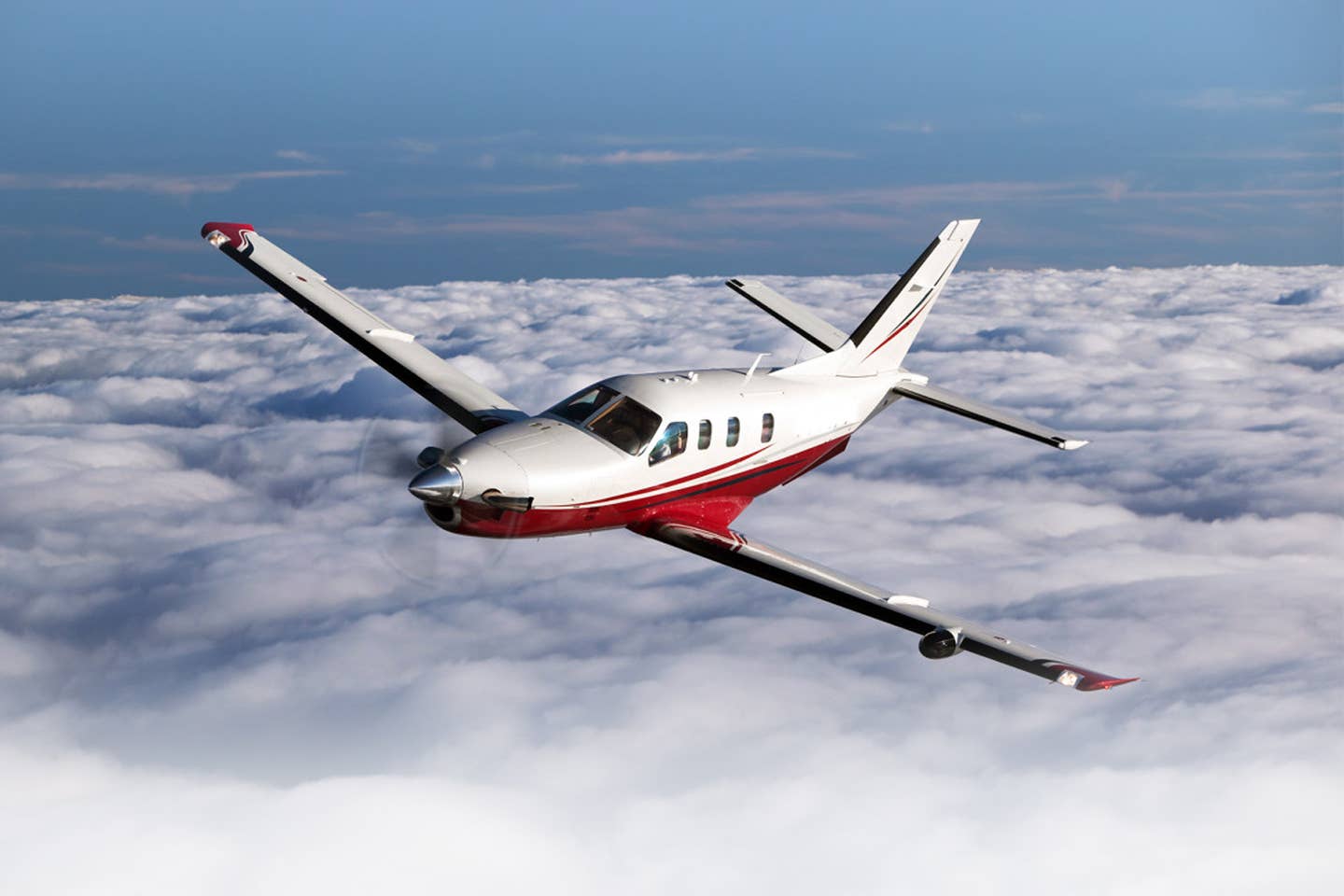
The TBM pilot reported everything was fine just moments before the accident (photo not of the accident airplane). Daher
A Daher TBM 700, N965DM, departed Manchester, New Hampshire (KMHT), on October 2 at approximately 19 minutes past 10 am bound for Buffalo, New York (KBUF), some 374 miles to the west. The pilot, a prominent New York attorney, held a private pilot certificate with an instrument rating and filed an appropriate IFR flight plan for the Part 91 trip. The other person aboard was his niece.
According to Flight Aware, approximately 25 minutes after takeoff, the aircraft leveled at its cruising altitude of FL280 and there it remained for another hour until it neared Buffalo. Then, for reasons as yet unknown, the pilot failed to check in with a Boston Center controller along the way when he was requested to do so, but did connect with a Buffalo controller directly when he was approximately 15 miles east of the airport and requested the ILS to Runway 23. The NTSB’s preliminary report indicates the aircraft was still level at FL280.
The Buffalo Approach controller realized the TBM on an IFR flight plan simply popping up on his frequency at 28,000 feet was odd, so during the initial conversation, he queried the pilot wondering if everything on board the aircraft was OK. The pilot simply responded with, “Yes sir, everything’s fine.” The controller then asked the TBM pilot to descend to 8,000 feet and expect the ILS Runway 23 approach. The weather at Buffalo was reported as good VFR with a broken deck of clouds at 6,000 feet.
According to the NTSB, shortly after the pilot apparently acknowledged the descent clearance, “the controller observed the airplane descending rapidly on radar and instructed the pilot to stop the descent at 10,000 feet. The pilot did not respond. The controller made several additional attempts to establish communications with the pilot, however, there were no further communications received from the pilot.” The aircraft crashed in a heavily wooded, swampy area near the town of Corfu, New York, at 10:45 am killing both occupants. A post-crash fire followed the impact.
During the final three minutes of the flight, as the aircraft descended through 15,000 feet, it accelerated to a “radar-derived groundspeed of more than 340 knots,” as the rate of descent increased to at least 13,800 feet per minute. “The airplane made one right 360° turn before radar contact was lost.”
The Board said, “Wreckage and components of the airplane were recovered from the surface of the terrain to a depth 15 feet below the surface. The smell of jet-A fuel was noted at the accident site by first responders. The airframe and engine components recovered from the accident site were retained for further examination.” Because of travel restrictions surrounding the ongoing pandemic, the NTSB did not travel to the scene of this accident. A final report may take approximately 18 months to complete.

Sign-up for newsletters & special offers!
Get the latest FLYING stories & special offers delivered directly to your inbox






